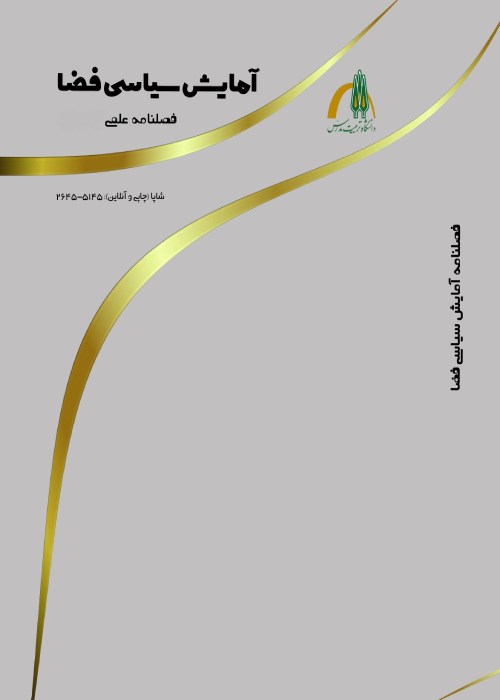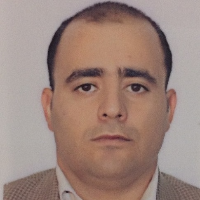Spatial Analysis of Crimes in the Slums of Ahvaz Using the Technique (VIKOR)
Slums as an output of spatial imbalances originating from the injustice of space is one of the most important foundations threatening security and development in individual and collective scales. Ahvaz ranks first in the country in terms of the area of Slums areas with ten districts, and in terms of the marginal population with 450 thousand people, it is one of the densest marginal areas in the country. The impact of the Slums areas can be investigated and analyzed from various aspects, one of the most important aspects of these studies is the spatial analysis of crimes in the Slums areas of the city and the identification of crime-prone areas for the prevention of crimes in the city. Space of Ahvaz city has two important features. The first is the extent and the second is the presence of marginal areas. The marginal neighborhoods of Ahvaz city include Shalang Abad, Siyahi, Ain Do, Al Safi, Hasir Abad, Zargan, Zargan, Zoway, Cheniba, and Malashieh. In this article, focusing on crimes such as armed robbery, extortion, brawl, shooting, and murder, the marginal neighborhoods have been examined and ranked in terms of the five crimes index.
This article will be organized using the descriptive-analytical method and the use of theoretical and field studies of research findings. In order to analyze the theoretical aspects of the research, library data, documents, electronic references, etc. have been used. Analytical Hierarchy Process (AHP) has been used to determine the weight of crimes and the Vicor technique in Excel in order to rank areas in terms of the occurrence of five types of crimes.
The findings show that the ranking of the marginal neighborhoods in terms of five types of crimes, from the highest to the lowest amount, respectively, including Al-Safi, Hasir Abad, and the source of water, Shelang Abad, Siyahi and Ain Do, Malashieh, Cheniba, and Zargan. And it is Zoya. Insecurity caused by urban marginalization can be categorized into three scales: 1- local scale; which include: the suburbs of the city. In general, insecurity in the city can be seen and investigated in the following two ways: A: Crimes in urban life such as armed robbery, extortion, shooting, etc. B: Violent acts that are usually collective. Such as: conflict and quarrel 2- Regional or metropolitan scale of Ahvaz city: the marginal areas of Ahvaz city provide a suitable platform for the residence of criminals and criminals due to the possibility of reduced police security surveillance. In this scale, insecurity and crime gradually penetrate from the marginal neighborhoods to other neighborhoods in Ahvaz. And the security of Ahvaz metropolis faces a crisis. 3- Regional scale or Khuzestan province: After the spread of insecurity and crime at the local and regional level, there is a possibility of reflecting the absence or reduction of insecurity from Ahvaz metropolis to the scale of Khuzestan province. This level of insecurity goes beyond crime-prone urban areas. Decreasing the security of Ahvaz city as its political centrality for Khuzestan province has economic, political, cultural, social, etc. dimensions on this scale is important for Khuzestan province. Therefore, in the line of research, the Analytical Hierarchy Process (AHP) has been used to determine the weight of crimes and Vicor technique in Excel in order to rank areas in terms of the occurrence of five types of crimes. So that the marginal neighborhoods are ranked in terms of five crimes and the neighborhoods that have more crime potential than other areas are identified.
One of the most important issues arising from the governance of the marginalization conditions in the country's metropolises. At present, Ahvaz, due to the centrality of the province and the presence of higher education centers, specialized medical services, power plants, and industrial and commercial centers, has welcomed immigrants from the cities and settlements of Khuzestan province and other provinces. The situation of the marginal neighborhoods of Ahvaz is in an unfavorable situation in terms of human development and physical space. And it affects the increase of urban crimes. This important point is the need to pay attention to spatial justice at the local and regional levels of Ahvaz city space for the relative equality of human development indicators and physical space. Through the spatial analysis of crimes in the marginal neighborhoods of Ahvaz metropolis, it is possible to identify the neighborhoods that are in an unfavorable situation in terms of related crimes in order to prevent crime.
Urban Security , Ahvaz , Slums , Crime , VIKOR
- حق عضویت دریافتی صرف حمایت از نشریات عضو و نگهداری، تکمیل و توسعه مگیران میشود.
- پرداخت حق اشتراک و دانلود مقالات اجازه بازنشر آن در سایر رسانههای چاپی و دیجیتال را به کاربر نمیدهد.



